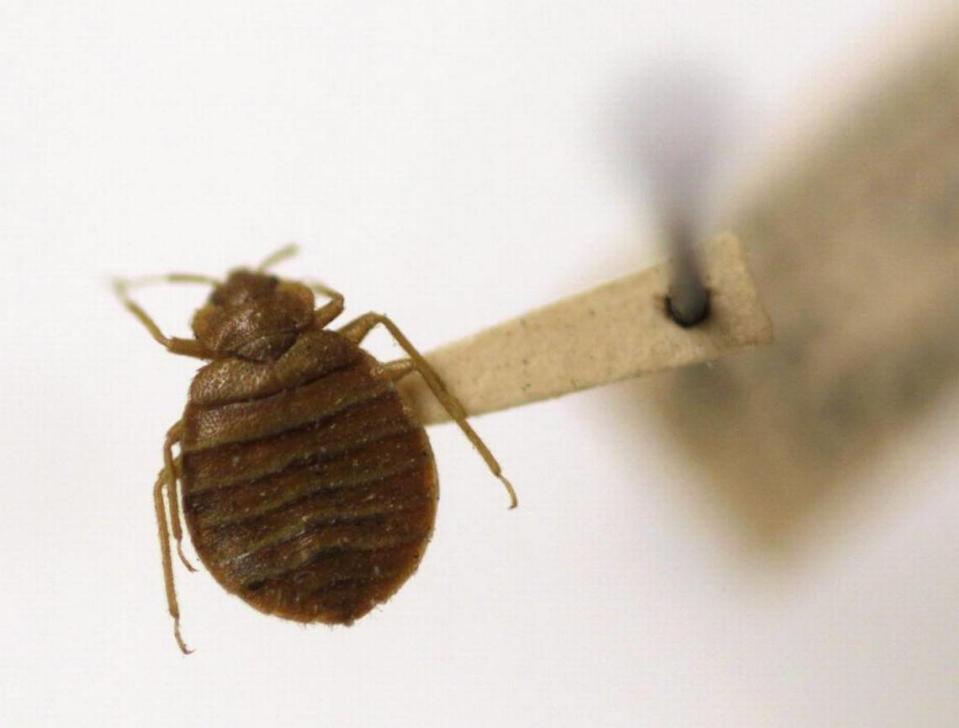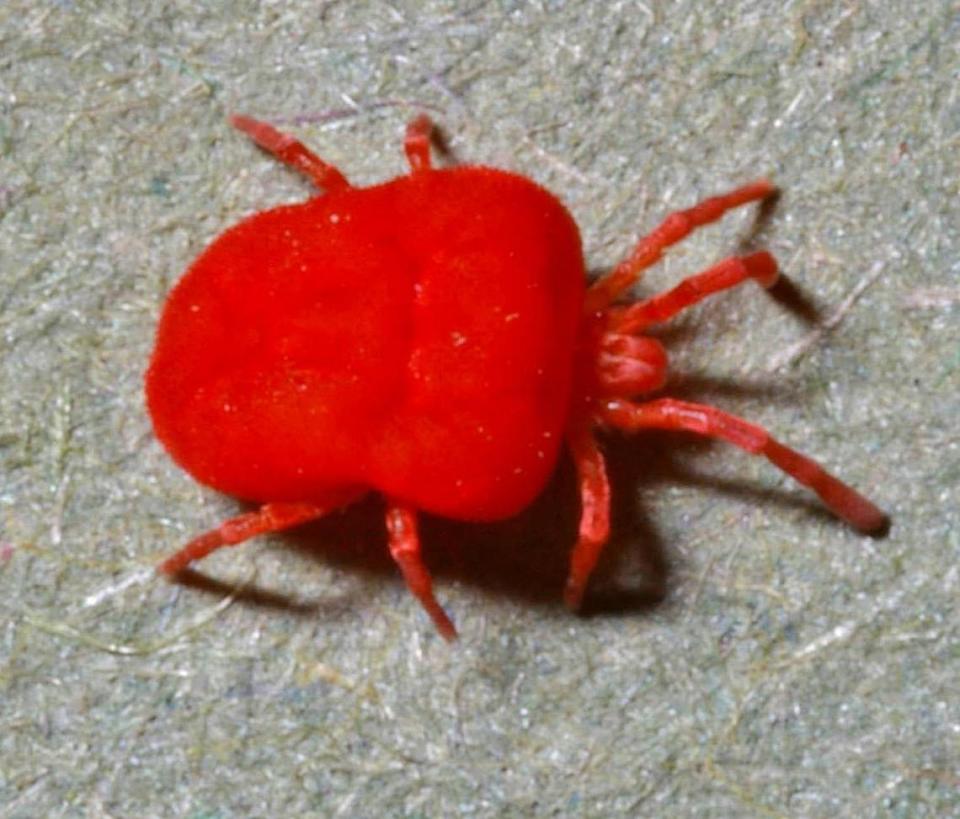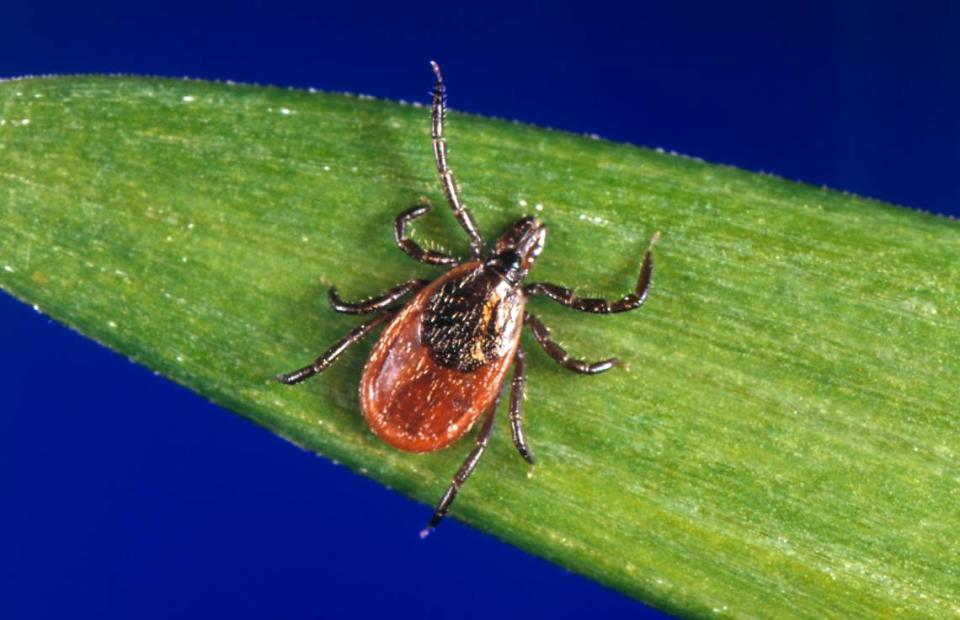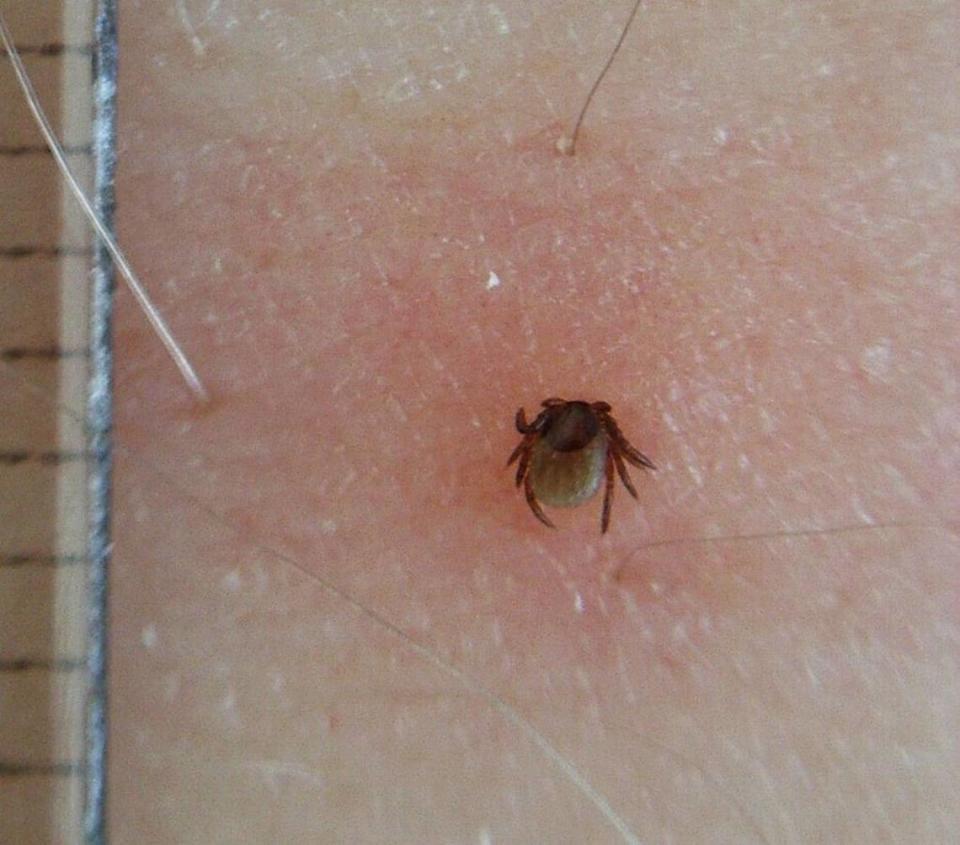Getting eaten alive in Kentucky? Here’s how to distinguish bites from 4 common pests
When it comes to identifying bug bites, even medical professionals can struggle.
That’s because, regardless of what bit you, the characteristics are likely to be similar: pain, itching, swelling and redness or some combination of each.
Still, if you look closely enough, there are some distinguishing factors, such as the bite pattern or the bite itself. Here’s a rundown of some of the most common biting pests in Kentucky, with information about each and close-up photos for comparison.
Bed bugs

According to Michael Potter, an entomologist and professor emeritus at the University of Kentucky, you’re likely to notice most pests that feed on humans at the point of contact — specifically when they bite or cause some other kind of irritation in order to feed.
Bed bugs are one big exception. As Potter explains in an article he penned on the subject, bed bugs feed at night while their hosts are sleeping. You aren’t likely to see or feel the itchy, red welts beg bugs leave behind until a day later or even longer.
This is because bed bugs inject a kind of anesthetic, or numbing agent, to avoid detection, according to the Cleveland Clinic. They also make use of an anticoagulant so your blood flows more freely while they feed, typically between five and 10 minutes.
As the Cleveland Clinic notes, bed bug bites can look different on various skin types. That said, they tend to have some common features that include, according to the clinic:
Raised bumps appearing in a line, zigzag or even a random pattern
Pimple-like bumps with a dark red center and a lighter than normal skin tone surrounding it
Round bumps containing a clear fluid, essentially a blister
Raised bumps often red or purple in color, hives

If you have an infestation on your hands, there will also be several signs of bed bug activity, but you have to know where to look.
Chiggers

Chiggers, the immature stage of the harvest mite, are among a few varieties of mite known to trouble humans.
Contrary to what many might think, they don’t actually burrow into your skin, those are scabies.
Chiggers also aren’t after your blood. What they do want is your skin cells, which they sip up after injecting a tissue-dissolving fluid, converting areas of your skin into their personal milkshake bar. Afterward, they move on to another part of your skin where they repeat the process, which is why their bites form in a line.

While the bites can vary from person to person, the telltale sign of chiggers on your skin will be red spots that can be flat or raised. They may look like blisters.
Chigger rashes most commonly show up on your ankles, behind the knees or at your waist level below your belt line. The arachnids gravitate toward the waist, armpits, chest area or anywhere an elastic band squeezes, such as a bra line or around the underwear.
According to Jonathan Larson, an assistant professor of entomology for the UK’s Extension service, this is because it’s easier for them to feed.
Mosquitoes
Mosquito bites tend to be obvious and familiar: those annoying and itchy red bumps that appear quickly after a bite takes place. However, there are some things to know about the invasive Asian tiger mosquito, which is common in Central Kentucky.
Invasive Asian tiger mosquitoes are known as aggressive biters, and in the Lexington area during the summer and fall, about 90% of human mosquito bites can be attributed to this species alone, according to UK entomologists.
In other parts of the world, it’s a carrier of dengue fever. Here in the U.S., it can spread west nile virus, encephalitis and possibly the zika virus.
Asian tiger mosquitoes are marked by their distinctive white-and-black stripes, along with their persistent biting behavior. Asian tigers aren’t intimidated by a few swats, unlike other species.
The best way to protect yourself from Asian tiger mosquitoes is to avoid coming into contact with them in the first place. To do so, you should eliminate any ideal mosquito habitat or breeding areas near your home.

Ticks

While tick bites aren’t usually painful or itchy, they can transmit diseases you should be aware of if you’re spending time outdoors.
Here’s a quick rundown of the most common tick varieties in Kentucky:
Deer ticks spread Lyme disease and tick paralysis, and the greatest risk of encountering them occurs in the spring, summer and fall. However, you can encounter them any time temperatures are above freezing, according to the Kentucky Department of Fish and Wildlife Resources. Also called blacklegged ticks, female deer ticks are orange-brown in color, and the juvenile nymphs and adult females are most likely to bite humans.
Dog ticks are reddish brown in color and unlike deer ticks, have a distinctive white-rimmed shield. This variety also spreads tick paralysis and spotted fever. Most active in the spring and summer, adult female dog ticks are the most likely to bite humans.
The lone star tick, taking over as the No. 1 most common tick species in Kentucky, has not been shown to carry Lyme disease. They can spread the emerging heartland virus, however, which can lead to hospitalization and death in humans. This virus can cause alpha-gal syndrome, a serious allergic reaction to red meat. You’ll know a lone star tick by the single white dot on its back, which is exhibited by the female of the species.
You’ll often know you’ve been bitten by a tick because it will still be latched on to your skin, with it’s head burrowed into the outer layer.

According to UK entomologists, there are ways to safely remove a tick. Ideally, you want to remove the entire tick in one piece, rather than tearing it apart and leaving some parts behind.
Use fine tweezers to grasp the tick as closely as possible to the surface of the skin.
Pull up with steady, even pressure. Don’t twist or jerk the tick.
Clean the bite area and your hands with rubbing alcohol or soap and water.
You can then store the tick in a sealed plastic bag with the date and location you found it. Bring it to your local cooperative extension office for identification. If you have concerns about disease exposure, you should check with your doctor. Most diseases spread by ticks can be avoided with early detection and an antibiotic.
Do you have a question about wildlife in Kentucky for our service journalism team? We’d like to hear from you. Fill our our Know Your Kentucky form or email ask@herald-leader.com.

